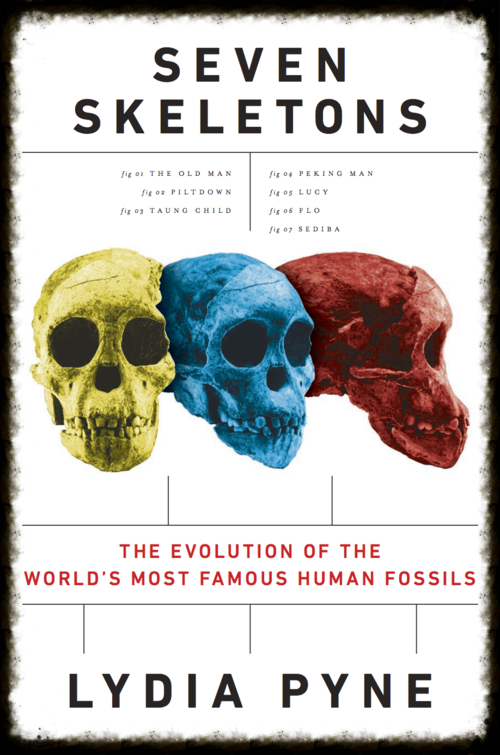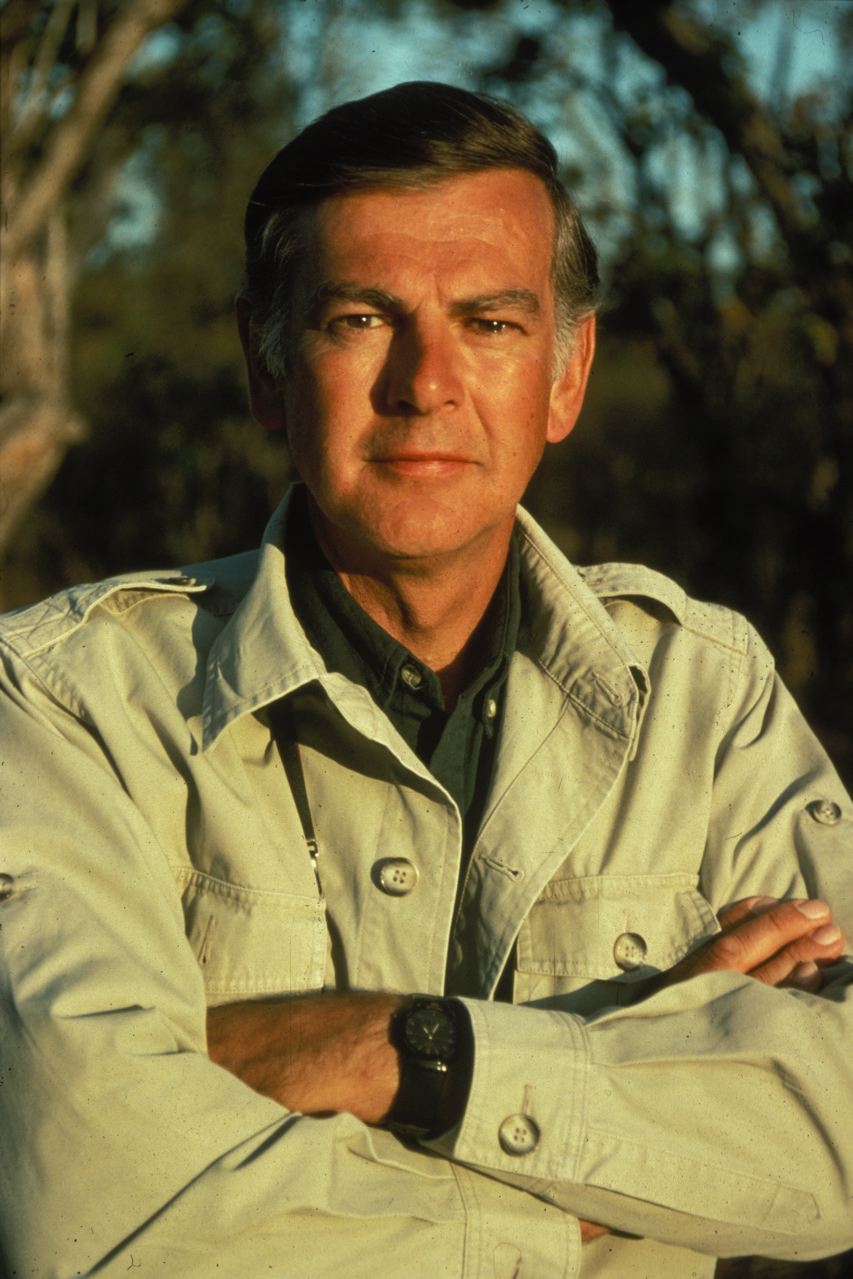
Over the last century, the search for human ancestors has spanned four continents and resulted in the discovery of hundreds of fossils. While most of these discoveries live quietly in museum collections, there are a few that have become world-renowned celebrity personas–ambassadors of science that speak to public audiences. But how does a fossil become a celebrity? Lydia Pyne, historian, author, and fellow of UT’s Institute for Historical Studies, has written a book about seven of the world’s most famous human fossils–appropriately titled Seven Skeletons. In this episode, she shares vivid examples of how human ancestors have been remembered, received, and immortalized.
Guests
 Lydia PyneIndependent Scholar and Visiting Research Affiliate, Institute for Historical Studies at the University of Texas at Austin
Lydia PyneIndependent Scholar and Visiting Research Affiliate, Institute for Historical Studies at the University of Texas at Austin
Hosts
 Christopher RosePostdoctoral Fellow, Institute for Historical Studies, The University of Texas at Austin
Christopher RosePostdoctoral Fellow, Institute for Historical Studies, The University of Texas at Austin
The title of your book I think kind of sets up the discussion we’re going to have today, which is famous fossils. There’s celebrity historians and celebrity … well, celebrities throughout history. But in this case, I know one of the ones you look at is Lucy, who is arguably the world’s most famous skeleton —
Absolutely, I think that it’s hard to find a fossil or an artifact in that sense for pre-history that you would find a more famous example than Lucy. Lucy really is the cultural yardstick by which we measure all other fossils.
So what is it like as as a historian–you also have a degree in anthropology–but studying the history of an object as opposed to–I think most historians (a lot of historians) work on concepts or people or movements. But you’re looking at an object which is pretty static–and yet it probably isn’t as static as it would seem, is it?
Exactly, and that theme right there is one of the one of the major things that I wanted to explore in seven skeletons. I had–these are famous fossils that that we know sort of through examples in anthropology classes or references in popular media. I think a lot of the time we end up with a very it seems like a very straightfoward study: a story a fossil is discovered, it’s studied, and then it’s put in a museum. And what I really wanted to understand was: what are all of the smaller stories. What is the life history of a fossil? They get strung together amid all of these these sort of major points along the fossils life and so very much, I think that the the idea that celebrity fossils and famous fossils had these kinds of history was very much the underpinning of what I wanted to do with Seven Skeletons.
So how did you go about sort of constructing this history of object?
Sure. One of the things that I was really committed to in the project was looking at a variety of sources. I knew that I wanted to spend time in museum archives, and that certainly makes sense for some of the older specimens like the Piltdown Man hoax, or the Old Man of La Chapelle, the Neanderthal, that was discovered at the beginning of the 20th century and as well as the Taung Child from South Africa, so I spent some time in the archives at the University of the Witwatersrand in Johannesburg. And so I knew that there would be an archival component to this. But a lot of these fossils that I talked about are also much more recent. And so the archival record is a lot more abbreviated than what we would see with some of these other fossils. And so with that I would go through media presentation of the fossil: how is it talked about in its media life? How is it photographed? How are the scientists that discovered it? How are they interviewed? What kind of books do they go on to write about these fossils–sort of what’s the fossil’s social life. And, so coming at it from that perspective, I feel like there were a lot of other sort of bits and pieces of material culture that end up sort of telling these stories of these famous fossils beyond just the archives.
What is it that makes a particular object famous? There have been a lot of
That’s the question of the hour right?
I mean, you know, I’m thinking about you know, they’re finding dinosaurs and birds. And you know, the dinosaurs in the books today don’t look like the dinosaurs in the books when I was a kid, right? But, you know, they don’t capture the imagination. I can’t imagine–I don’t even know what they’re called anymore–The big new big dinosaur doing a world tour quite the way Lucy did a few years ago. So what really makes something significant? Or have you managed to sort of put together a guess or an idea about that?
I mean, sort of, I think the high level what makes something famous is its context, sort of, when is it discovered? Who discovers it? What questions–what scientific questions can it answer right then and there? And then sort of whether it gets, I think, folded into popular imagination in ways that are very difficult to predict or to anticipate or to manufacture? And so I think that in order for a fossil hominid to become famous, I think it needs to sort of meet that that balancing point of being folded into culture as well as having value in scientific circles.
I’m going to harp on Lucy again.
Great!
Because, you know, as you mentioned the context which she was discovered by the Leakeys who themselves were … please tell me I’m correct …
Actually, she was discovered by Donald Johansson.
Okay, then let’s just take that question out.

That’s fine. But it actually is kind of an interesting question. Okay. Um, that that sort of Johansson found Lucy very on in his career, actually, in the very early stages of of his paleoanthropology career. And I think that it definitely sort of catapulted his career in a way that other brilliant kinds of studies wouldn’t have. You have this fantastic thing that people can identify with, and people can point to, you’re the guy that found Lucy, and suddenly that defines, I think, a scientific career in ways that that other kinds of laboratory based careers are going to be very different. And so I think that your question of sort of, what does it do for the career of the discoverer, I think by and large it’s demonstrable that it catapults the scientist’s career.
How did she get her name? I just have to ask.
So she got her name from The Beatles’ song Lucy in the Sky with Diamonds. In Johansson’s memoir he writes that it was playing at camp the night they brought the fossil back and so she was christened Lucy after The Beatles song.

So, another one–We’ll get off Lucy for a second–that you talk about in your book is the Taung child, which has a very dramatic story of the discovery. Did that also lead to the — well, first off, can you sort of relate the story, and then, secondly, does this high adventure then proceed to translate into celebrity?
That’s a really good question, especially sort of juxtaposed with Lucy there. So the story of finding Dart, Raymond Dart finding the tongue child in South Africa is one of these it’s almost apocryphal in paleoanthropology. And, as Dart tells it in his autobiography that he had asked the limeworks mine that’s nearby where he’s teaching in Johannesburg to send him interesting fossils. And so one of these crates of fossils arrives while he and his wife are hosting a wedding, getting ready to host a wedding. And so Dart being the curious scientists that he starts rummaging through the box and finds the first part of the Taung child fossil, this amazing fossilization of a brain actually, it’s called an endocast. And so Dart finds this and he’s absolutely just caught up in this brilliant moment of–I think he describes it actually is “was I going to be Darwin’s, the hand, the instrument in Darwin’s hand to bring human origin research back to Africa?” and his wife, you know, sort of breaks into his reverie and sort of, you know, shakes him and says, “we have to get back to the to the wedding,” and the bride groom rushes in and says, “you know, if you’re not going to be the best man I have to go find a new best man. I mean, we’ve got we’ve got to kind of pull it together here.”
So we now we have an image of him in his tuxedo…
Yes, in his full Edwardian Dress, full Edwardian formal dress rummaging through and then after all is said and done, he finds the other parts of the Taung child. There’s a mandible, there’s part of the face and then the brain cast as well and puts it back together. And then he actually dashes off a publication to Nature fairly quickly, about 40 days after he’s actually sort of freed the fossil from its limestone matrix, which is incredibly fast for that kind of paper, that kind of description of a fossil’s anatomy. And he sort of meets with a lot of pushback from the scientific establishment. Because he describes this Taung Child fossil which he puts into this species, Australopithecus Africanus. He puts this –he creates a new species, first of all, and then he puts this new species as an ancestor to Homo sapiens. And the scientific establishment kind of pushes back about this and says that it doesn’t meet a lot of the criteria that they thought human ancestors should have. They thought that the human ancestors should have a bigger brain than the Taung child did. And that lots of lots of other anatomical characteristics. And so Dart actually doesn’t sort of become immediately the scientific celebrity that some of the other late 20th century and even 21st century fossil discovers do enjoy. Dart sort of takes several decades for his fossil discovery to become rehabilitated into the scientific establishment.
It’s interesting that you mentioned rehabilitation, because one of the things I’m thinking about is, for example, how they tell you in your first history methods seminar that history is the study of change. And I’m thinking particularly, as you just mentioned this fossil, thinking about how what it meant changed over time. Is this something common that you’ve seen? I mean, you look at seven skeletons and was this was a common theme as you were going through these these objects, that people were reinterpreting them in different ways?
I think that is absolutely true for some of the more recent ones. I don’t think that we’ve seen the kind of drastic shifts like, for example, the Taung child: it’s sort of obscure, then it becomes this fantastic example, this case study the type specimen of the species, to talk about early bipedalism in Africa, human origins in Africa. And then other fossils like the Piltdown Man hoax where, what was once thought to be a fossil is actually shown to to not be a fossil at all. And so definitely the interpretations of that are going to change. It’s not going to be in the the family tree anymore. Other specimens like the Old Man of La Chapelle, which is a Neanderthal that was discovered in France in the beginning of the 20th century, when it was originally described and sort of put out there to museums, and to the popular culture, there was very much this sort of knuckle dragging troglodyte stereotype that we sort of think of with a Neanderthal and that original interpretation of the Neanderthals is very much where that comes from. And so I think that certainly the Neanderthal more than any other of the species that I talked about, or any of the other specimens that I talked about, is certainly one that is seeing the most rehabilitation or the most reimagining or the most sort of reengagement. That maybe as the social context for these different fossils change, certainly what they what they are going to be is going to change. But what I find so interesting is that we keep going back to these same fossils with these reinterpretations and these reimagining that they’re the sort of service these cultural touchstones that we keep wanting to go back. And as the story’s changed, we still go back to these these sort of familiar characters.
Out of curiosity, of the seven, do you have a favorite?
Um, that’s a great question. Actually, I think that I became really partial to the Taung child. During the time that I spent in South Africa. Going through the Raymond Dart archive, I felt like I got to know the fossil more than I got to know some of the other fossils. And so it feels it feels like there’s this personal connection. And it felt almost like that was very much at the heart of, of some of the points of seven skeletons was that these are fossils that we form connections to. People have heard of Lucy, people have maybe heard of The Hobbit, the Piltdown hoax is one of the most famous and the history of science. And so I think that people sort of form connections to these fossils through the stories that they know about them. And so I felt like forming these kind of connections to the Taung child through the archives was very much in the spirit of the book.
Was there anything that surprised you as you were going through this? These are seven pretty well known specimens. But was there anything that just sort of may just step back and reassess or, or really surprised you as you were doing your research?
One of the things that I didn’t expect one of the directions for research that I didn’t expect to go down was to look at the history of how these specimens had been displayed in museums. Oh, interesting. And to sort of see how these specimens live, their museum display lives, so incredibly different. So Neanderthals that are put into the Chicago Museum in the sort of early to mid 20th century are going to look and to create very different narratives than the Neanderthals that we see today in the American Museum of Natural History or the Smithsonian Institute. So looking at old photographs, looking at old reconstructions, old imaginings of these particular skeletons was a really unexpectedly cool aspect of the of the story and to sort of see how we keep reimagining what these characters look like and how they would have behaved, I think, adds a very sort of humanizing dimension to the skeletons.
I think that that also probably has a lot to do with museum studies as a whole different field, but
exactly
I was at the American Museum of Natural History recently and Lucy is literally in the middle*–you could actually walk right by her if you don’t know she’s there–of this multimedia exhibition. They’ve got holograms and AV and “touch this,” and two floors below it is an anthropological exhibit on Africa where they’re talking about the the recent finds of “Negro skeletons in Rhodesia.” So to me it was it was just a really stark contrast because I think also with the excitement goes a lot of the funding and the modern scholarship. And you know it was one of those things where I mean this thing is clearly from a time when number 1, you could describe peoples as “negros,” and number 2, Rhodesia was still a country. So we’re looking at is the 1950 or 1970s. And it was just really fascinating to sort of follow that that sort of trajectory even as you move through a museum as to what gets updated and what remains very static.
I think that that’s a really interesting point. And certainly, I think that these these seven skeletons have definitely been sort of tipping points or trajectories for different researchers being able to pursue different additional field work–that Lucy has very much been able to propel interest in field work in Ethiopia and other other big specimens. Other big finds that I don’t talk about in the book have certainly served similar functions along the rift valley in East Africa. And so I think that there very much is the sense that the, the celebrity object, the thing that can sort of captivate imagination is going to sort of trade in cultural cache, whether it intends to or not. It sort of does. And I think that that’s really interesting.
____
*Ed’s note: the skeleton in the American Museum of Natural History in New York is a cast of the original skeleton. After a world tour from 2007-2013, Lucy once again resides in the National Museum of Ethiopia in Addis Ababa; the original fossil is not on display to the public.